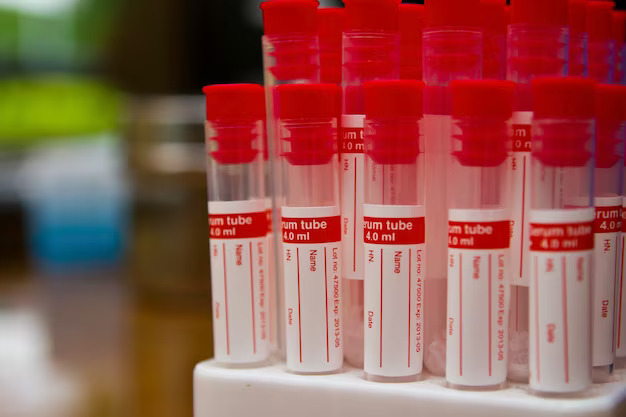
The vacuum blood collection tube market is expanding significantly because these tubes are crucial for diagnosing various medical issues, from infections and anemia to more serious conditions like leukemia and kidney dysfunction. These tubes are indispensable for laboratory tests, helping healthcare providers to start treatments for different illnesses in a timely manner. In comparison to the conventional methods of drawing blood with syringes, vacuum tubes offer multiple benefits. They provide a safer experience for those drawing the blood and ensure cleaner samples because there's less handling and transferring. These tubes are also simpler to use and contain pre-mixed additives. The tubes come with color-coded caps, making it easier for healthcare professionals to understand and communicate about the tests needed. Additionally, they allow for multiple samples to be taken at once, which lowers the chances of damaging the blood cells or hemolysis. Using these vacuum tubes, or "vacutainers," improves the efficiency of diagnostic procedures, shortens the time needed to collect blood samples, and reduces the potential for injuries from needles as well as the risk of sample contamination.
The global vacuum blood collection tube market is projected to register a Compound Annual Growth Rate (CAGR) of 3.02% during the forecast period 2023 – 2030 to reach USD 3.20 billion by the year 2030. Several factors are driving the market's growth, including the rising prevalence of chronic and infectious diseases, and the growing incidence of hematological disorders. In addition, the emergence and re-emergence of infectious diseases pose a significant public health threat, driving the demand for blood collection tubes for clinical diagnostics. The demand for blood collection tubes for clinical diagnostics is expected to increase on account of frequent disease outbreaks in endemic regions. The increase in blood donations is also expected to result in an increase in the usage of blood collection tubes, thereby fueling market growth. However, the vacuum blood collection tube market is plagued by certain challenges, such as a shortage of skilled personnel and low awareness of products in low- and middle-income regions.
These are the latest findings of Research and Markets (Dublin, Ireland), a source for international market research reports.
Based on type, the serum-separating tube segment held the largest share of the vacuum blood collection tube market in 2022, mainly due to the benefits of the barrier gel, which allows for rapid separation of serum from cellular components in blood, thereby reducing hemolysis. By material, the PET/plastic material segment dominated the vacuum blood collection tube market in 2022 due to its advantages over glass, including lower exposure to biohazardous material following breakage, tolerance of higher centrifugation speeds, greater shock resistance, lighter weight, and simpler disposal using cost-effective incineration.
Based on application, the blood routine examination segment held the largest share of the vacuum blood collection tube market in 2022, driven by the prevalence of lifestyle diseases and growing awareness of routine medical examinations. By end-user, pathology laboratories dominated the vacuum blood collection tube market in 2022, led by the high prevalence of diseases such as hepatitis B, HIV AIDS, diabetes, cancer, and heart diseases, which require different types of blood tests to gauge disease severity. Geographically, North America dominated the global vacuum blood collection tube market in 2022, due to the presence of leading clinical diagnostics companies, well-developed healthcare infrastructure, and higher R&D activities in the region.
Related Links:
Research and Markets